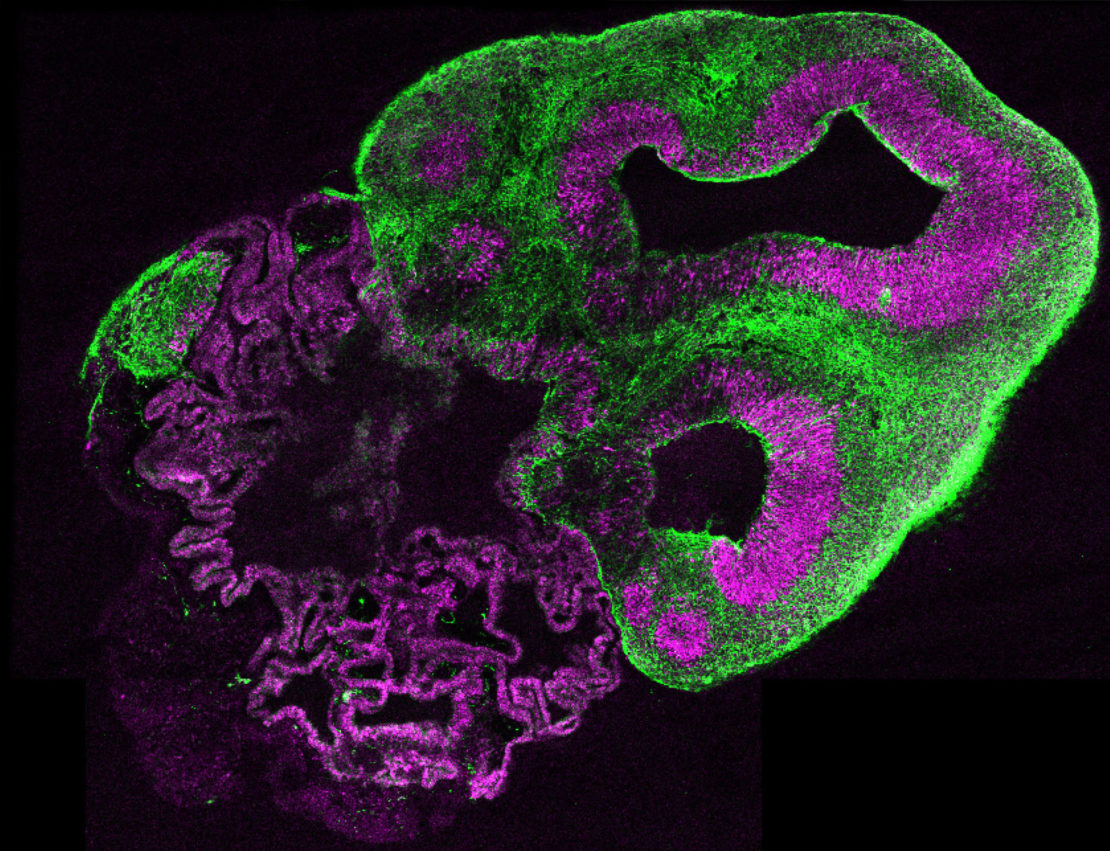How to grow a 'brain'
It sounds like witchcraft. Scientists take a sample of your skin, transform the skin cells into stem cells, and from these grow pea-sized blobs of brain. Living, human brain, built from your cells.
Back in 2010, Madeline Lancaster, the inventor of this powerful new procedure, was fresh from her PhD in California, learning the ropes in a new lab in Vienna. She set out to grow brain cells on the flat bottom of the Petri dish. But many cells refused to stay put: they floated up and massed into small balls. This was a familiar problem, but it piqued Lancaster's interest.

How big could the balls grow? She encased them in protective jelly and agitated her broth, so nutrients and oxygen could penetrate deeper. Eventually, in 2013, she coaxed them into growing up to several millimetres across. This was new.
Lancaster christened her globbish, off-white creations cerebral organoids. Or, more commonly, mini-brains.
The insides of a mini-brain are reminiscent of a busy building site. Stem cells lay the foundations and churn out thousands of new cells, the raw material of the growing edifice. Neurons form the bulk of the structure. Later, teams of glial cells appear, building a scaffold and servicing the wiring laid down by the neurons. An ever-shifting hum of industry prevails.
Unlike the building site, though, there is no blueprint and no foreman taking charge as brain tissue grows in the dish. Division of labour, order and complexity emerge spontaneously. What's more, much of what materialises is startlingly akin to the brain of an early human foetus.
But in contrast to a human foetus, neuroscientists can tinker with and drug the animate tissue of the mini-brain.
Whereas research on animals ranging from giant squid to monkeys has provided the biggest insights into brain development and function, we don't mess around with living human brains. We don't actually know how accurately much of the animal research translates.
Hence the huge potential of lab-grown brain tissue. It comes from a piece of skin donated by consent. The ethics are simple.
The result is a biologically realistic brain ripe for experimentation. Miniature cultured brains won't replace all animal research, but they're already proving a useful tool.
With collaborators in Vienna and Edinburgh, Lancaster has used them to reveal new information on the causes of microcephaly, a devastating genetic brain disorder. She can even repair one of the disease-causing mutations, although it's not yet possible to use the same trick to cure patients.
Looking ahead, Lancaster, who is currently establishing her own lab in Cambridge, believes her new approach could have a big impact on healthcare: "We'd like to standardise the procedure, to do drug screening and things," she says. Sure enough, scientists around the world are adopting Lancaster's protocols and developing their own.
François Guillemot, a senior neurobiologist at the Crick Institute in London tells me, "This is the main approach to study organ development in humans." Adding, "I know that quite a few labs have started these experiments."
If the academics can iron out the kinks, we'll most likely see the pharmaceutical industry joining the fray.
But might there be more ambitious, longer-term aims for brains grown in the lab? Could we use them to address more psychological or even philosophical conundrums?
Might it be possible to create thinking mini-brains?
They're certainly not thinking at the moment. They are brains under construction, so the neural networks inside are rudimentary at best. Without any sensory input or output, all 'brain activity' will be meaningless chatter.
Lancaster and others are constantly pushing their cultured brains to grow bigger and more complex. Eventually, scientists somewhere will stimulate the brain tissue artificially and see what emerges across the network. Computers might listen to the output and provide feedback. Mini-brains could become biological computing devices, with interesting and interactive information-processing powers.
Might they be thinking then? Who knows? They certainly won't answer back.
For the moment this is still science fiction. But, says Lancaster, "I'm sure somebody will try to do this. I wouldn't say 'No, it shouldn't be done,' but I think it should be subjected to very careful ethical review."